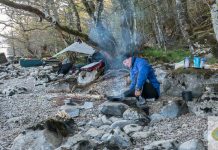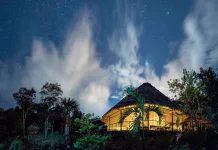Coastal foraging offers a unique way to connect with nature and gather wild food along shorelines. Whether you’re seeking edible seaweed, shellfish, or plants, the world’s coastlines provide a diverse array of treasures waiting to be discovered. Foraging is not only about finding food, but also about understanding the local environment, tides, and ecosystems that sustain these resources.
If you’re interested in trying coastal foraging, there are a number of prime locations worldwide that offer rich coastal ecosystems and an abundance of edible species. Here are some of the best spots to explore, each with its own unique foraging opportunities.
1. Scotland, United Kingdom
Scotland’s rugged coastline is known for its wild beauty and rich marine life. From seaweed to shellfish, the Scottish shores provide ample foraging opportunities. The west coast, in particular, offers access to a variety of edible seaweeds like kelp and dulse, as well as razor clams, mussels, and cockles. The remote islands and tidal flats of Scotland are perfect for those looking to immerse themselves in a wild, untamed foraging experience.
2. Brittany, France
Brittany’s coast, with its rocky shores and expansive tidal zones, is one of the best places for coastal foraging in Europe. The region is known for its seaweed, including varieties like sea lettuce and kombu. Brittany’s waters are also home to an abundance of oysters, clams, and mussels. The rich culinary heritage of the region, paired with the bounty of the coast, makes it a top destination for foragers and food lovers alike.
3. Maine, United States
Maine’s cold, clean waters are famous for their abundance of shellfish, especially clams, mussels, and oysters. Foragers along the Maine coast can also find seaweed varieties such as bladderwrack and rockweed. The rocky shores and secluded coves of this northeastern state provide a tranquil setting for gathering wild foods while enjoying stunning ocean views.
4. Tasmania, Australia
Tasmania offers a unique coastal foraging experience with its blend of temperate and sub-Antarctic waters. The island’s shorelines are home to a variety of edible seaweeds, shellfish, and coastal plants. Some of the best areas to forage include the east coast and the remote southern beaches, where you can find abalone, periwinkles, and wakame. Tasmania’s pristine environment makes it a prime spot for sustainable foraging.
5. New Zealand
New Zealand’s extensive coastline provides an abundance of wild food, making it a haven for coastal foragers. The country’s beaches and tidal zones are rich in seaweed, shellfish, and coastal plants. The South Island, in particular, offers excellent foraging spots for species like paua (abalone), mussels, and edible seaweeds. New Zealand’s commitment to environmental conservation ensures that foragers can enjoy nature’s bounty while preserving these resources for future generations.
6. Galicia, Spain
The Galician coast, located in the northwest of Spain, is renowned for its seafood. This region offers some of the best foraging opportunities in Europe, with a variety of edible seaweeds and shellfish. Foragers in Galicia can gather mussels, clams, and barnacles, while the tidal pools reveal seaweed species like nori and dulse. Galicia’s rugged coastline and strong fishing tradition make it a top destination for coastal foragers.
7. British Columbia, Canada
British Columbia’s coastline is a forager’s paradise, offering a diverse range of edible species in its cold, nutrient-rich waters. The region is known for its seaweed varieties such as bull kelp and bladderwrack, as well as an abundance of shellfish, including clams, oysters, and scallops. Foragers in British Columbia can enjoy the vast wilderness of the Pacific Northwest while collecting wild foods from its pristine shores.
Conclusion
From the wild coasts of Scotland to the temperate shores of New Zealand, the world is full of incredible coastal foraging spots. Each region offers a unique blend of edible plants, seaweeds, and marine life, providing foragers with rich and rewarding experiences. Whether you’re a seasoned forager or just starting out, exploring these coastal areas can deepen your connection to nature and introduce you to new flavors and foods along the way.







